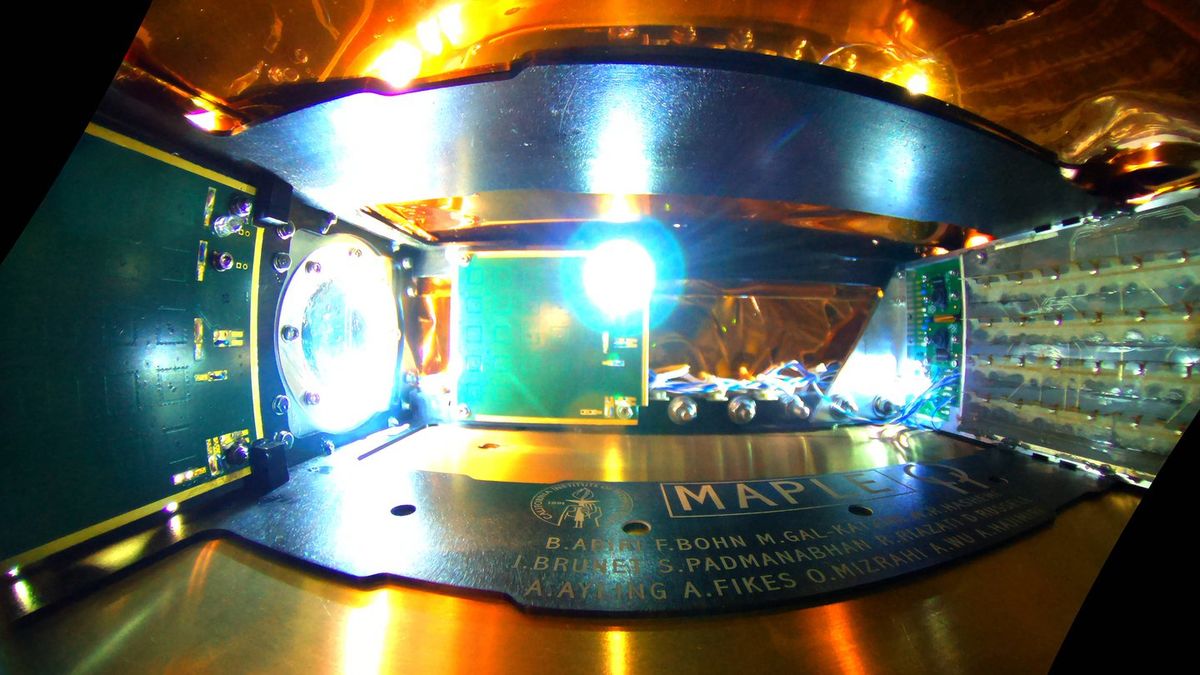A space solar power prototype has successfully demonstrated its ability to wirelessly beam power through space and direct a detectable amount of energy toward Earth .This experiment confirms the potential of tapping into an almost limitless supply of solar power from space, which is available without interruptions from factors like day and night cycles, cloud cover, or weather conditions.
Space-based solar harvesters can harness up to eight times more power compared to solar panels on Earth’s surface. The Microwave Array for Power-transfer Low-orbit Experiment (MAPLE) is responsible for the wireless power transfer, using a flexible and lightweight array of microwave power transmitters.
The Space Solar Power Demonstrator (SSPD-1), carrying MAPLE, was launched in January 2023 as part of the California Institute of Technology’s Space Solar Power Project (SSPP).The primary goal of the SSPP is to harvest solar power in space and transmit it to Earth’s surface. MAPLE successfully transmitted power to receivers in space and could be programmed to direct energy toward Earth.
MAPLE demonstrated wireless transmission of energy by transforming it into electricity and lighting up LEDs through separate receiver arrays .Beaming solar power from space offers an economical way for countries to significantly boost their energy supply.
Similar Post
Sunlight at the top of Earth’s atmosphere is approximately ten times more intense than at the surface, making high orbit an ideal location for continuous solar power absorption. Transmitters in high orbit can transfer energy to stations on Earth whenever needed. MAPLE’s array of flexible microwave power transmitters can efficiently deliver energy wirelessly.
Wireless energy transfer can democratize access to energy, similar to how the internet democratized access to information. No energy transmission infrastructure is needed on the ground to receive this power, enabling energy distribution to remote regions and areas affected by war or natural disasters.
Challenges remain, such as reducing the weight of transmitters to decrease the fuel required for launch and ensuring flexibility for folding inside rockets .The required structures for space-based solar energy projects need to be large both on Earth and in space. Other countries, such as China and British firm Space Solar, are also working on space-based solar energy initiatives.
China aims to develop a solar power plant in space by 2028, while Space Solar plans to create a solar energy station with support from Saudi Arabia. Space Solar aims to provide a trial project generating six megawatts of power from low Earth orbit within six years and expand to a two-gigawatt power station in high orbit by 2035.MAPLE’s successful transmission of energy in space demonstrates its resilience to harsh conditions, temperature fluctuations, and solar radiation exposure.
MAPLE’s performance assessment will guide the development of fully realized versions of the system in the future .The Space Solar Power Project envisions a constellation of modular spacecraft collecting sunlight, converting it into electricity, and beaming microwaves to desired locations, including regions lacking energy infrastructure.
The wireless energy transfer technology has the potential to revolutionize energy access, particularly for remote areas and those impacted by disasters .The prospect of wireless energy transfer through space opens up new possibilities for a sustainable and accessible energy future.


















